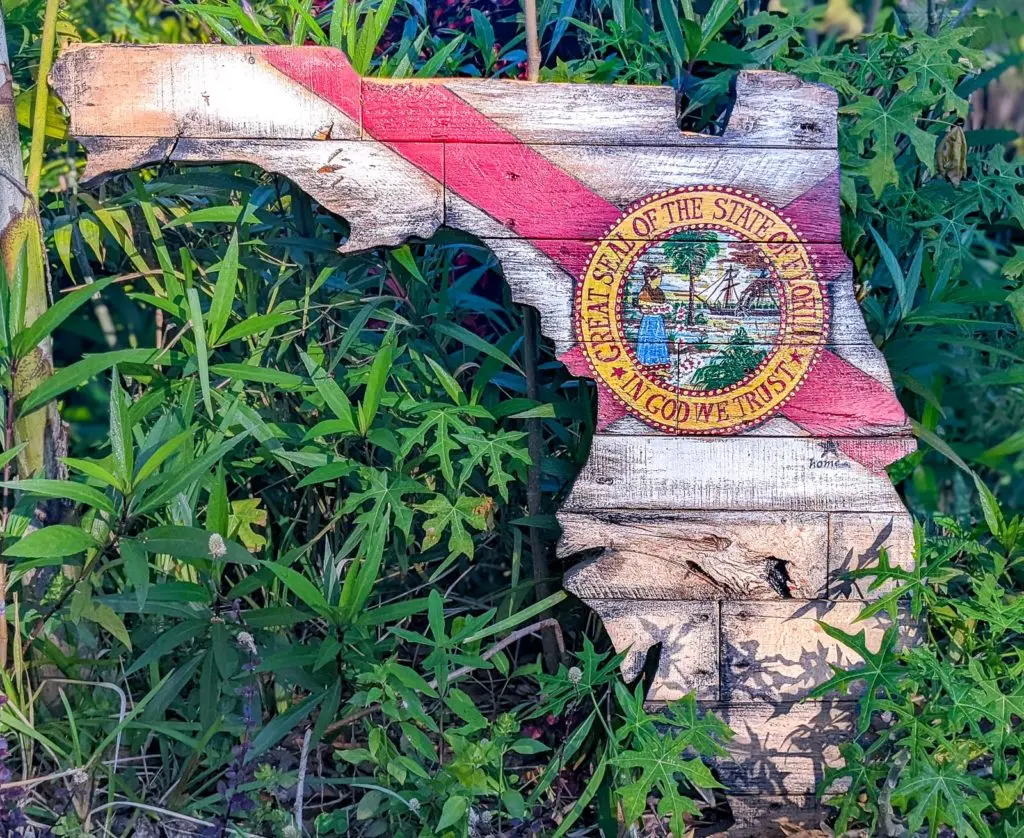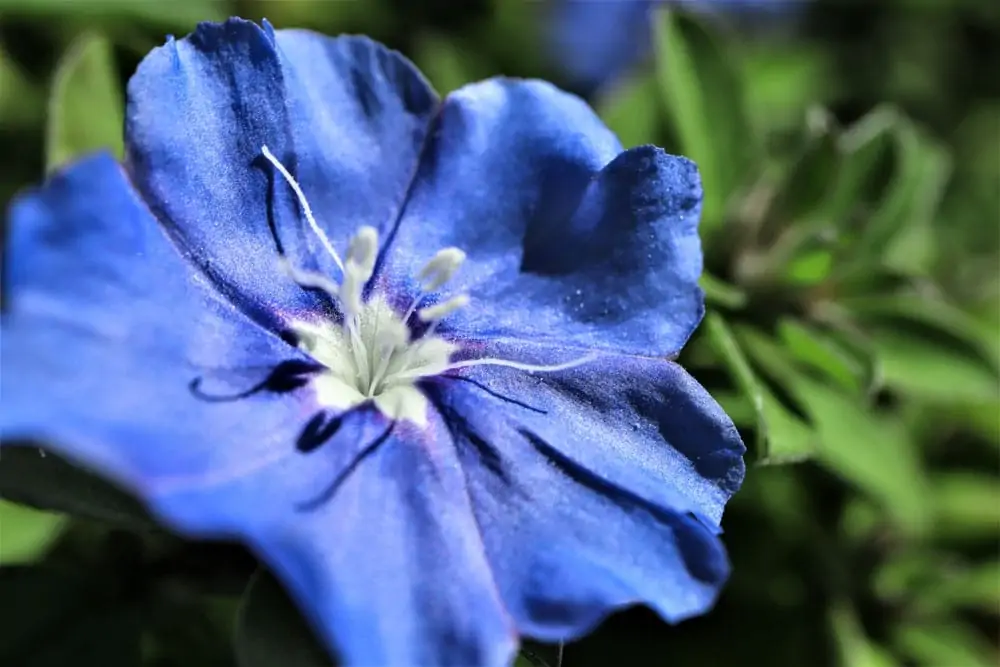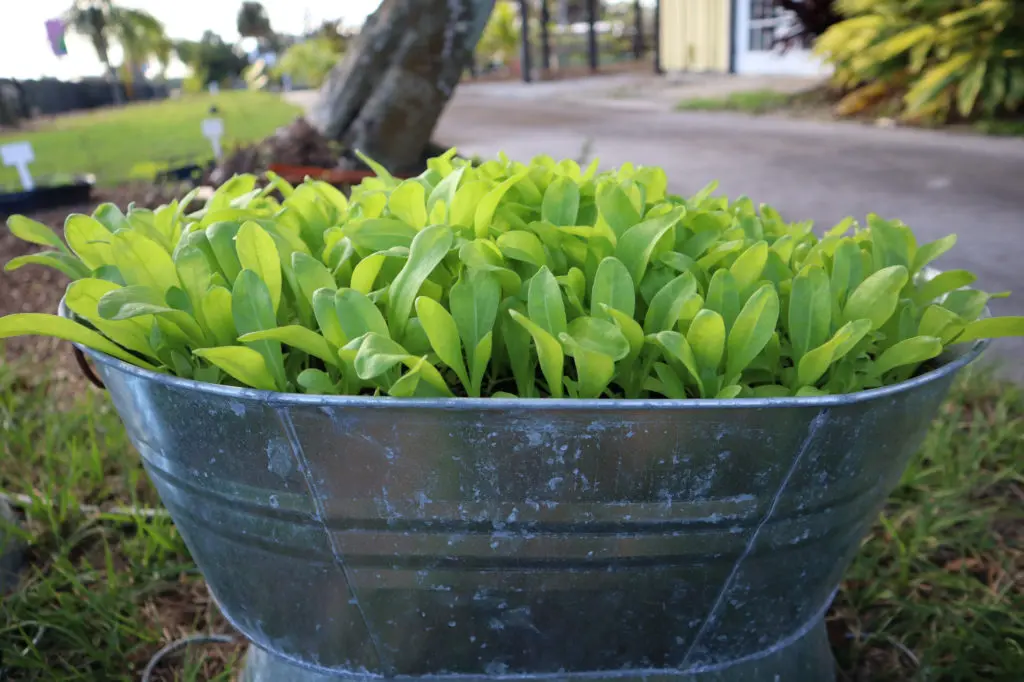By Amanda Rose Newton
For decades, Florida’s climate has invited transplants, snowbirds, and those just wanting to soak up a few rays. While the climate here is beautiful, it features its fair share of extremes. From heat waves to hurricanes to occasional freezes, it’s tough on plants.

Whether you have lived here your whole life and are just getting into gardening or if you are a seasoned gardener from out of state, there is a climate learning curve.
Several zones exist depending on where you go in the state, so even if you were moving from the panhandle to Miami, what you can a plant and the timing of it will change. Keeping up and figuring out what will work is overwhelming, no matter what your experience is.
Here is the one tip you need to remember: Florida’s gardening calendar is the flipped version of what you would do elsewhere in the United States.
In February, strawberries are ready and March is prime veggie planting season. Flowers call it quits in the intense summer heat of July, with things momentarily picking back up for Fall.
If you are up for the challenge, the array of fruits, nuts, vegetables, herbs, flowers, and shrubs you can grow here is unmatched! Here are a few suggestions from my experience as a Florida transplant/snowbird based on plant type.
1. Fruit and Nut Trees
This is where Florida really shines! In addition to classics like figs, peaches, and plums, you can add mangos, loquats, jackfruit, and avocados to the landscape.
If your yard is a blank canvas, start with fruit trees, nut trees, and some easy-to-grow varieties of peaches, figs, persimmons, pecan, avocados, and mangos and continue to add to it over time.
While still a Florida symbol, citrus is not a beginner plant thanks to an array of diseases such as Greening.
If you are on the coast you may want to experiment with coconut, macadamia, or soursop.
One of the benefits of planting fruiting trees is that they are perennial and take away from the timing guesswork. Plant it once and it will feed you for a lifetime.
The best time to plant a fruit tree? Anytime the temperatures are likely to stay above 50°F for a week or more. Nothing stops a growing in its tracks like an unexpected freeze.
2. Flowering Trees and Shrubs
Trees that bloom– many all year round– are classic additions to the landscape that can also create a tropical feel. This is a great way to add perennial color to your yard with little maintenance and generally low fertilizer needs.
The following mini-list includes some great choices for beginners with small to medium-sized yards. As with the fruit trees, err on the side of caution with planting in the colder months.
Jatropha integerrima (Jatropha): Red flowers, year-round
Magnolia grandiflora (Southern Magnolia): Florida native, big white flowers
Melaleuca viminalis (Bottlebrush): Red flowers, spring to winter
Myricanthes fragrans (Simpson Stopper): Florida native, white flowers, beautiful bark
Plumeria sp. (Plumeria): Flowers used in leis, early summer to fall, no foliage in the winter
Tabebuia sp (Trumpet tree): Pink or yellow blooms, spring to early summer
3. Flowers
This is where many new-to-Florida gardeners have mini breakdowns. Breaking it to you as gently as possible, say goodbye to your hyacinths, daffodils, crocus, and other bulb friends from up north. They will not perform in Florida due to our lack of chill hours.
Many flowers you have come to love throughout the summer months such as pansies, geraniums, phlox, and snapdragons are going to fizzle out once June arrives.
This does not mean flowers are off the table! Stick with Florida “smart” choices such as those listed below, and you can still have a little color in the dredges of the summer heatwave.
Blue My Mind (Evolvulus nuttallianus) This perennial opens up only during a certain portion of the day, extending its ability to beat the heat.

Portulaca or Purslane (Portulaca oleracea) The succulent-like leaves on this one stay open all winter and features reduced watering requirements.
Dune Sunflower (Helianthus debilis) This Florida native can grow on the beach, so you know it has what it takes to stay put in your landscape.
4. Vegetables
Perhaps the hardest of all the foliage types to get a handle on are vegetables and herbs.
In fact, it is such a commonly asked question that we have created a wonderful fact sheet that lists the timing of a variety of herbs and vegetable crops.
Each has a specific window for planting the actual plant vs seed, just as you would in any other state. The key difference is timing!

Just like with flowers, vegetable gardening is not at its best in the summertime. Expect a bounty of goodness in early spring and again in autumn, with a few deletions and additions. For example, root vegetables are not going to taste like what the cold ground can produce up north, and artichokes will not produce at all.
However, we are lucky to have an extended season and you really can make the most out of your annual plantings if you plan accordingly.
Since summer is the most challenging, here are a couple of choices that work well and will keep you fed even at the peak of heat:
Okinawa Spinach (Gynura bicolor)
Longevity Spinach (Gynura procumbens)
Edible Hibiscus such as Cranberry (Hibiscus acetosella)
Collards (Brassica sp.)
Chaya (Cnidoscolus aconitifolius)
Moringa (Moringa oleifera)
Katuk (Sauropus androgynus)
Eggplant (Solanum melongena)
Okra (Abelmoschus esculentus)
Everglades Tomato (Lycopersican esculentum ‘Everglades’
Hot Peppers (Capsicum sp.)
Tips for Success
The lists above are just a sampling of what Florida has to offer for beginning gardeners.
Whatever your focus, keep in mind that soil, climate, and weather all are unique to your region in the state. For best success, amend the sandy soil and use a root-promoting aid such as Biotone (organic and safe for edibles) every time you plant.
Ask us for advice for the specific watering needs of your plants and pay attention to the signals and symptoms exhibited by the foliage. The number one reason plants fail in Florida is too much water so make sure you’re up to date of your plant’s water preferences and needs.
Humidity brings pests and fungi, so consistent monitoring is of utmost importance. It also gives you an excuse to get out and bathe in the natural greenery of your yard, as you learn the subtle details of our seasonal change.
When it comes to selecting plants, always choose local. While big box stores carry what’s popular all over the nation, community nurseries, garden centers, and farmer’s markets are going to sell what is growing NOW and only what is appropriate for our unique ecosystem, ensuring less stress as you navigate the joys and challenges of becoming a real Florida gardener.


